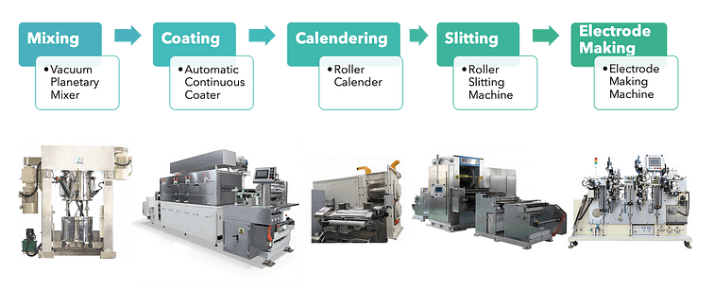Site Blog
contact us
- If you have questions, please contact us, all questions will be answered
- Email : David@tmaxcn.com
- Email : Davidtmaxcn@gmail.com
- Add : No. 39, Xinchang Road, Xinyang, Haicang Dist., Xiamen, Fujian, China (Mainland)
hot products
Prismatic cell production line are specialized equipment used in the manufacturing of prismatic cells, which are a type of lithium-ion battery that has a rectangular or square shape. These machines typically consist of several different processes and components, including:
1.Electrode manufacturing: The electrode manufacturing process typically starts with the preparation of the metal foil substrate, which is often made from materials such as copper or aluminum. The substrate is then coated with a layer of active material, which is typically a metal oxide, such as lithium cobalt oxide (LCO), lithium nickel manganese cobalt oxide (NMC), or lithium iron phosphate (LFP).
The active material is applied to the substrate using a variety of methods, such as slurry coating or electrodeposition. Once the active material has been applied, the electrode is typically dried to remove any excess solvent and then cut to the appropriate size for the prismatic cell.
2.Cell assembly: The cell assembly process typically involves the stacking of the positive and negative electrodes, along with the separator and electrolyte, to form a completed prismatic cell. The separator is a thin layer of material that is placed between the electrodes to prevent them from coming into contact with each other.
The electrolyte is a liquid or gel-like substance that allows the flow of ions between the electrodes during charging and discharging. The type of electrolyte used can vary depending on the specific chemistry of the cell, but it is typically a lithium salt dissolved in an organic solvent.
In the cell assembly process, the electrodes and separator are typically stacked in a specific order and then sealed in a vacuum-sealed pouch. The pouch is designed to prevent the escape of the electrolyte and to maintain the structural integrity of the cell.
3.Formation: This process involves charging and discharging the cells to activate the active materials and stabilize the cell's performance. This process typically takes several hours to complete and is performed at a controlled temperature and voltage.
4.Testing: After formation, the cells are typically tested to ensure they meet the required performance and safety standards. This may involve testing the cell's capacity, cycle life, and safety features.
Prismatic cell production plant are used in a variety of industries, including electric vehicles, grid energy storage, and consumer electronics. These machines are typically designed to be highly automated and efficient, with the ability to produce large quantities of cells at a high rate of speed.
In recent years, there has been significant research and development focused on improving the efficiency and reliability of prismatic cell manufacturing line. This includes the use of advanced materials, such as silicon-based anodes, and new manufacturing processes, such as roll-to-roll production, to increase the production speed and reduce costs.
Overall, prismatic cell production machine are a critical component in the production of high-performance lithium-ion batteries, and continued innovation in this field is expected to drive further advancements in the energy storage industry.

 English▼
English▼




 +86 13174506016
+86 13174506016 David@tmaxcn.com
David@tmaxcn.com

